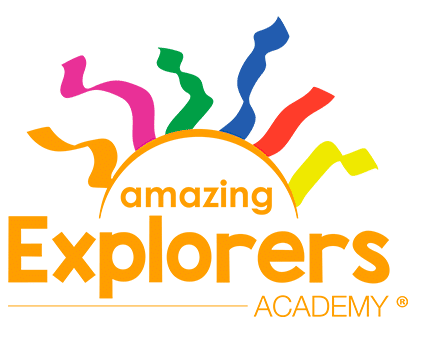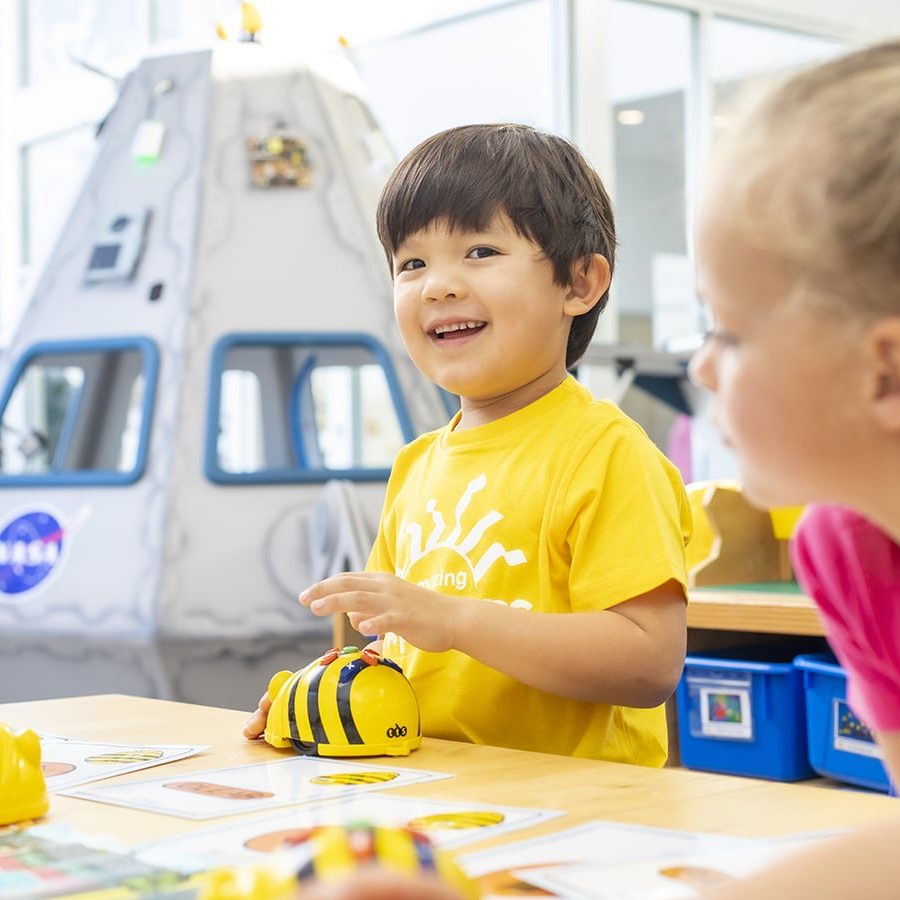Have you ever wondered how the choices made in the present moment might repercuss in the future? Making a decision about the educational method that will guide your child’s school journey is incredibly meaningful – and that’s when learning about STEM is important. You may have heard this buzzword, but do you know what does STEM stand for?
STEM is not only a methodology, but it can also represent an investment in your children’s lives. It is focused on expanding soft and hard skills that can truly help the child standing out from the crowd when they’re older.
Parents and caretakers who are involved in the mission of investing in a brighter future for their kids have a lot to benefit from learning about STEM.
What is STEM?
Here is the acronym unraveled: STEM stands for Science, Technology, Engineering and Mathematics. It might sound like a combination of subjects that are somewhat scary to most people because these topics might seem too hard, complicated, challenging or not initially connected to our daily routines.
But a STEM-based educational methodology takes advantage of this “bad” reputation and turns it around.
Children that grow and develop around a STEM-based methodology are encouraged to see more than meets the eye: there’s a whole new educational approach on these topics. The result is that they become familiar to the student yong learner.
Expectations of a STEM-based Curriculum
It’s expected that an educational curriculum based on STEM actually offers more opportunities when it comes to the student’s future. The reason for that is simple: if the child is not “afraid” or intimidated by the subjects, the learning process is enhanced.
As a result, they can truly use what they learn around these topics and aim at careers that might revolve around the matters.
They will not be scared of becoming scientists, engineers, teachers, researchers. Mathematics, instead of a mere school subject, becomes a means towards an end, a problem-solving tool.
Children should not be afraid to learn. STEM (and STEAM, but we’ll get to that in a moment) based methodologies are fully anchored on making the child familiar with challenging topics and developing around them instead of avoiding these subjects.
Differences Between STEAM and STEM
STEAM is very similar to STEM, but with a twist: the A stands for Art, which is actually related to subjective learning and acknowledgments.
The inclusion of the word “Art” does not necessarily mean that your child will become an engineer with artsy abilities (although this would probably be great for them!). The Art element is way more connected to the development of emotional and sensitive perceptions.
This means that your child’s future might be harmed and less complete than expected if they are not equipped with emotional intelligence.
Developing such skills focused on feelings, connections and understanding are key when it comes to experiencing empathy. The ability to learn from another person, or even make a smart decision based on what this person is going through are characteristics of a true leader.
Allowing your child’s sensibility to flourish might be what discern them from the crowd when they’re at their work age.
Benefits of STEAM for Young Children
Incorporating STEAM (Science, Technology, Engineering, Arts, and Math) into early childhood education offers countless benefits that extend far beyond the classroom. At Amazing Explorers Academy, we see firsthand how this integrated approach sparks creativity, builds critical thinking skills, and fosters social development in young learners.
Through STEAM, children are encouraged to explore, question, and solve problems in ways that stimulate their imaginations. This hands-on learning cultivates a sense of curiosity about the world, encouraging them to think independently and confidently tackle challenges.
For example, when a child builds a tower of blocks and experiments with balancing it, they engage in basic engineering and problem-solving. Similarly, observing a plant sprout after watering it introduces them to scientific concepts like cause and effect.
But the benefits go beyond intellectual development. A STEAM-based curriculum also nurtures a love for learning, which is critical for building self-esteem. When children see that they can solve problems and make discoveries, they begin to trust in their own ability to learn and grow.
This foundational confidence carries forward, influencing their academic journey and future career prospects. A child who learns through STEAM today may become the innovator or problem-solver of tomorrow.
How Each Topic in STEAM is Applied
Now that you know what the acronym stands for, understand more on what is expected for the students’ to apprehend from these subjects.
Science
When we think about science, you might come across an image of a person leaning into a microscope, but science is a lot more than the cliche, especially when it comes to children’s education.
This is literally the ability to learn about the world around you. Investigate, understand the reasoning or the origins of whatever matter means that your child’s curiosity is being well-used.
Technology
This is the topic that has changed the game when it comes to social interactions and work future. Technology is around our lives from the time we turn off our phone’s alarm until the selection of subjects that impact us in our social media.
A child that grows having a full understanding of how technology operates and how to use it for good purposes is an essential part of an ever-changing society.
Engineering
If Science is related to the What and Why, Engineering is all about the How.
This is not limited to building and huge projects, as the word might bring up, but more on how pieces connect: what does it take to put together something with the proper structure that will last as long as expected?
Arts
Whether it’s through drawing, storytelling, music, or design, the arts foster emotional intelligence, communication skills, and self-expression.
Arts also bridge the gap between abstract concepts and tangible understanding. For example, children can use visual art to demonstrate scientific phenomena, such as drawing the water cycle, or create songs to remember math concepts.
Mathematics
Children shouldn’t be scared of formulas, grouping different elements together in order to find a missing answer.
Since a proper understanding of Mathematics helps to develop logical thinking, Math could not be overlooked as part of a strong educational method.
Practical Examples of STEAM in Everyday Life
At AEA, we are strong believers that STEAM learning doesn’t have to be confined to the classroom. Parents can integrate STEAM activities into their child’s daily life in fun and meaningful ways!
Everyday experiences like cooking together offer countless opportunities to explore STEAM concepts. For instance, measuring ingredients introduces basic math skills, while observing how heat changes liquids into solids during cooking provides a hands-on science lesson.
Simple and routine household chores can also become STEAM adventures. Sorting laundry by color or size is an introduction to categorization and patterns, essential elements of math and critical thinking. Planting a small garden together allows children to explore biology and observe life cycles.
Something that navigates thoroughly within school and home experiences is Art: activities like creating collages with different textures can spark conversations about materials and their properties, seamlessly blending science and art.
STEM Education Disciplines and Future Work
It’s important to notice that disciplines that compose STEM are not studied and appreciated separately. In fact, as it’s combined, a whole new educational model is formed, which focuses on upscaling children’s skills on solving problems, using their creativity to look for solutions, and being able to analyze a given situation.
There is a gap on the matter of filling work opportunities for STEM competences. These occupations include computer, mathematical, engineering and architecture, life and physical science occupations. Also includes sales occupations requiring scientific or technical knowledge at a not so dense level.
These types of jobs tend to pay better than the so-called traditional job positions. There is also a perspective of an increase in the work demand for professionals that are skilled with STEM competences.
Can you see how choosing a STEM based education might open more doors in your child’s work life? It’s fascinating how the investment in your Little One’s future starts with something as simple as their daycare or preschool facility, right?
STEAM in the Amazing Explorers Academy Curriculum
At AEA, we incorporate learning experiences through play. Our students’ school and daycare routines are surrounded by stimulating activities, lots of social interaction, and engaging challenges that help them grow their logical thinking and creativity simultaneously.
As a result, we see that children naturally associate having fun while learning something new. The act of learning becomes pleasing and pressure-free, and we expect them to carry this happy feeling throughout their learning experiences.
Inside an educational facility, STEAM activities could look as simple as a Sink or Float experiment, in which children learn that plastic and metal materials behave differently when submersed; or they could replicate a volcano by integrating different aspects of knowledge such as science (chemical reaction), engineering (volcano structure), and art (color).
In Conclusion: What Does STEM Stand For?
Science, Technology, Engineering, Mathematics are the topics that constitute STEM. When the Arts is added to the combination, you have STEAM education an even more complete educational approach which is focused on developing soft and hard skills on children as they are young so that they master those credentials when they reach their adult age.
By embedding STEAM into everyday activities, parents and teachers can support integrated learning and create an engaging environment that sets children on a path toward lifelong success.
STEAM is one of the main educational methods we incorporate at Amazing Explorers Academy. Our school plans allow children of all ages starting from 6 months old: have a look at AEA’s programs and start investing in your child’s future today!



